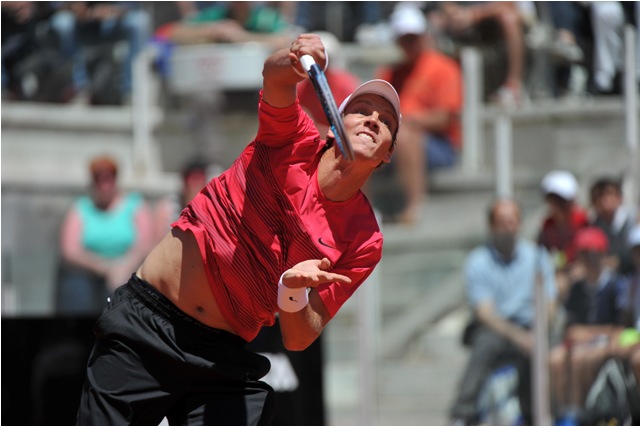Sascha Zverev dug deep to eliminate veteran Ivan Dodig 3-6, 7-5, 6-3 at the BNP Paribas Open on Friday. The 18 year old German needed two hours and 18 minutes to see off the 31 year old Croat in their first FedEx ATP Head2Head meeting, benefitting from an unusual, momentum-turning incident.
“I thought he twisted his ankle at the first, but then I saw him bleeding pretty close to the eye and I was like, wow, he probably hit himself with the racquet,” said Zverev, who was across the net when his opponent took a tumble, then hit himself in the face with his frame at 3-6, 1-1. “I don’t know what happened, to be quite honest. I didn’t see it, but he started bleeding quite heavily then.”
Dodig’s medical timeout allowed the young German to regroup. Zverev converted on two of nine break points in the second set to even the match, then won 11 of 12 first-serve points in the deciding set to secure victory. Next up for Zverev will be No. 23 seed Grigor Dimitrov, who holds a 1-0 lead in the pair’s FedEx ATP Head2Head rivalry (2014 Basel).
Vasek Pospisil was made to work hard before eliminating American wild card Jared Donaldson 7-6(5), 6-7(2), 6-3. The Canadian struck nine aces and needed almost three hours to close out the win. He will face Gilles Simon in the second round.
“I’m happy with the way I played and the way I fought,” said Pospisil, who represented Canada last week in a Davis Cup tie against France on a clay court in Guadeloupe. “The conditions were tough here. They’re polar opposite from what I played last week, so it’s a little bit of an adjustment, but he played a good match and he surprised me a little bit. He was playing well, and I had to play some great tennis to win today.”
Mikhail Kukushkin will play No. 5 seed Kei Nishikori in the second round after downing Daniel Munoz de la Nava 7-6(1), 6-2. The Kazakh will be looking for his first victory against the Japanese in six meetings.
Rafael Nadal will open against fellow left-hander Gilles Muller in the second round. The big-serving Muller defeated Victor Estrella-Burgos 7-5, 6-3, firing 16 aces in the process. Muller has shown flashes of brilliance in four previous tour-level meetings with Nadal, pushing three of their past six sets to a tie-break and beating a 19-year-old Nadal at Wimbledon in 2005.
Qualifier Bjorn Fratangelo earned his first ATP World Tour victory with a 6-4, 6-4 win over Teymuraz Gabashvili. The American did not face a break point in the 82-minute win. His next opponent will be top seed and two-time defending champion Novak Djokovic.
“I feel amazing. It’s a great feeling to get my first ATP win, and to do it in a 1000 event, to play Djokovic [next], it’s a pretty surreal feeling. I’m going to enjoy this as much as I can right now,” Fratangelo said.


